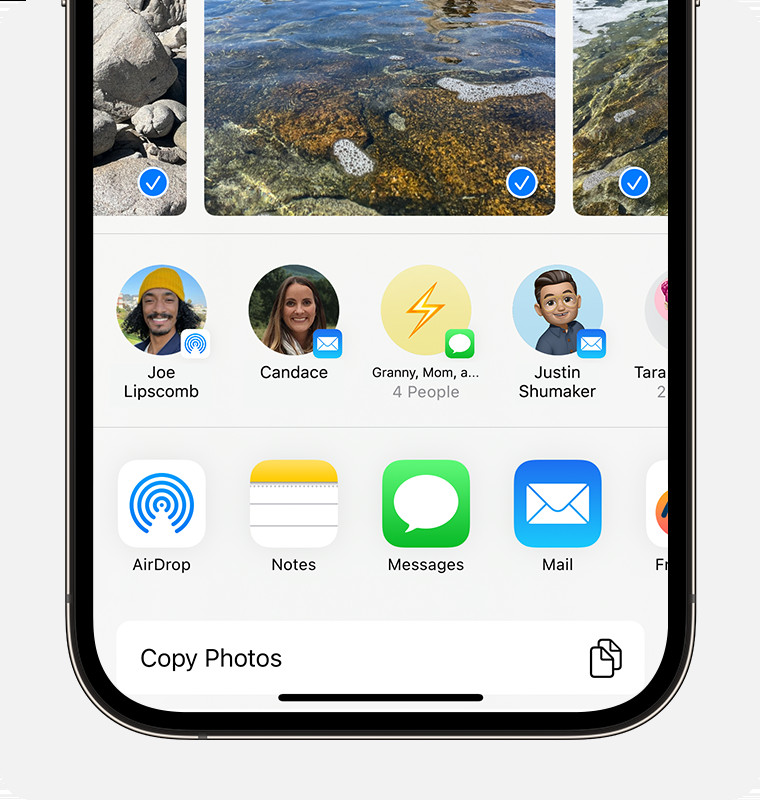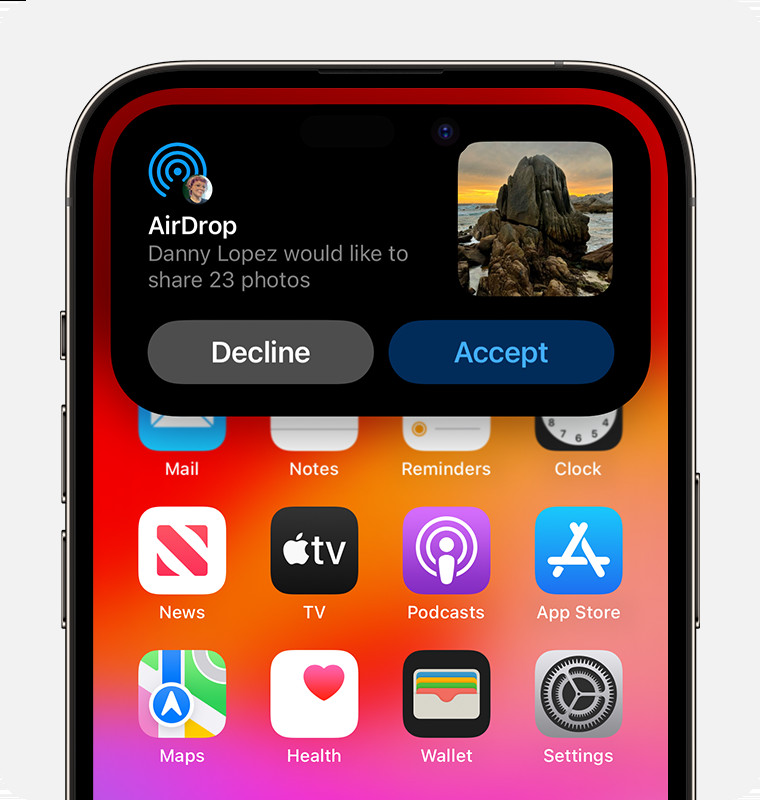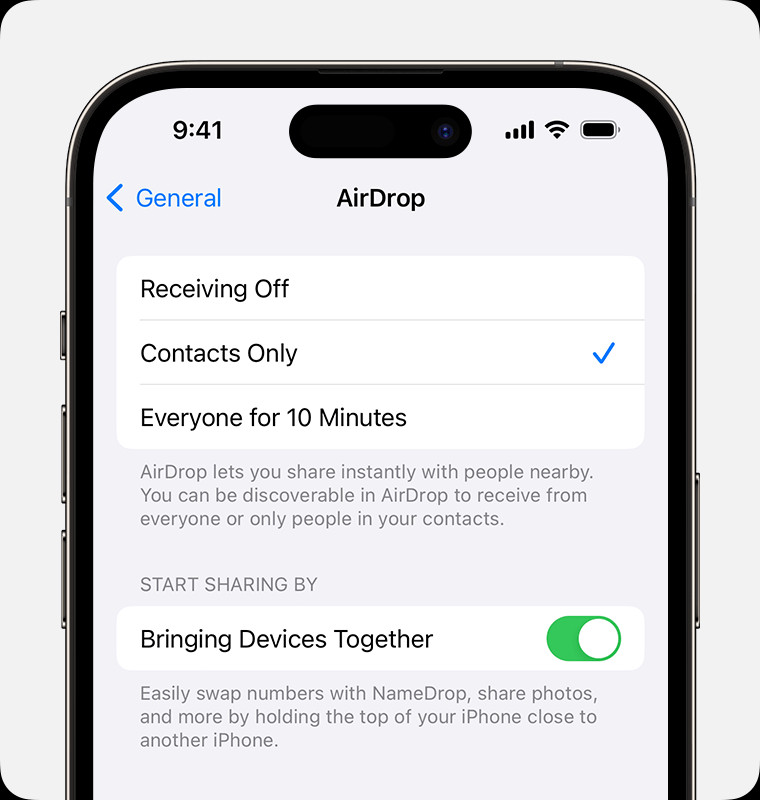AirDrop is a fantastic feature for Apple users, allowing you to seamlessly share photos, videos, documents, and more between iPhones, iPads, and Macs. If you’re looking for a quick and easy way to transfer your precious photos to another Apple device, AirDrop is your go-to solution. This guide will walk you through everything you need to know about how to AirDrop photos, ensuring a smooth and successful sharing experience.
Getting Ready to AirDrop Your Photos
Before you start sending photos via AirDrop, there are a few essential checks to ensure everything works perfectly. These prerequisites are simple but crucial for a successful connection.
- Proximity is Key: Make sure that the recipient’s Apple device is nearby, ideally within a few feet. AirDrop relies on Bluetooth and Wi-Fi to establish a direct, peer-to-peer connection, so physical proximity is necessary.
- Wi-Fi and Bluetooth Enabled: Both your device and the device you’re sending photos to must have Wi-Fi and Bluetooth turned on. You don’t need to be connected to a specific Wi-Fi network, but Wi-Fi needs to be active. Similarly, Bluetooth should be enabled but doesn’t need to be paired with the other device.
- Personal Hotspot Check: If either you or the recipient has Personal Hotspot activated, it’s important to turn it off temporarily. Personal Hotspot can interfere with AirDrop’s ability to create a direct connection.
- AirDrop Receiving Settings: The recipient’s AirDrop settings determine who can see their device and send them content. There are three options:
- Receiving Off: AirDrop is disabled, and they won’t receive any AirDrop requests.
- Contacts Only: Only people in their Contacts list can see their device in AirDrop. If you’re sending photos to someone who has this setting enabled and you’re in their contacts, they need to have your Apple ID email address or phone number saved in your contact card.
- Everyone: Anyone nearby with an Apple device using AirDrop can see their device. For first-time AirDrop users or if you are not in the recipient’s contacts, they might need to temporarily set their AirDrop receiving setting to “Everyone” to allow the transfer. For enhanced security, in iOS 16.2 and later, setting AirDrop to “Everyone” for 10 Minutes will automatically revert to “Contacts Only” after the time limit.
You can always adjust your AirDrop receiving settings to “Contacts Only” or “Receiving Off” to manage who can discover your device and send you content.
Step-by-Step Guide: How to AirDrop Photos
Now that you’ve ensured all the prerequisites are met, let’s get into the simple steps to AirDrop your photos:
-
Select the Photos You Want to Share: Open the Photos app on your iPhone or iPad and navigate to the photos you wish to AirDrop. You can select single or multiple photos. To select multiple photos, tap Select in the top right corner and then tap on each photo you want to include.
-
Access the Share Sheet: Once you’ve selected your photos, tap the Share button in the bottom left corner. This button looks like a square with an arrow pointing upwards.
-
Tap the AirDrop Button: In the Share Sheet that appears, look for the AirDrop icon. It’s typically located in the second row of icons and looks like concentric circles radiating outwards. Tap on the AirDrop button.
 iPhone share sheet with photos selected and the AirDrop option highlighted
iPhone share sheet with photos selected and the AirDrop option highlightedAlt text: iPhone screen showing the Photos app, multiple photos selected, and the AirDrop icon highlighted in the share sheet.
-
Choose the Recipient: After tapping AirDrop, your device will start searching for nearby Apple devices with AirDrop enabled. You will see a list of available AirDrop users. Tap on the name of the person you want to send your photos to. If the person is in your Contacts, you’ll likely see their contact photo alongside their name. If they are not in your contacts, you will see just their name. You can also AirDrop photos between your own Apple devices if they are nearby and logged in with the same Apple ID.
-
Proximity Sharing (iOS 17 and later): If you and the recipient are both using iPhones with iOS 17 or later and are within each other’s Contacts, there’s an even faster way to initiate AirDrop. Simply open the content you want to share and bring your iPhones close together. This proximity sharing feature streamlines the process even further.
Accepting AirDrop Photos
When someone AirDrops photos or other content to you, you’ll receive an alert on your iPhone or iPad screen.
-
AirDrop Alert: An AirDrop notification will pop up, showing a preview of the content being shared and options to “Accept” or “Decline”.
 iPhone displaying an AirDrop alert with options to Accept or Decline
iPhone displaying an AirDrop alert with options to Accept or DeclineAlt text: AirDrop alert on iPhone home screen, prompting user to Accept or Decline incoming photos.
-
Accept or Decline: Tap Accept to receive the photos. If you don’t want to receive the photos, tap Decline.
-
Automatic Acceptance for Your Devices: If you AirDrop photos to another of your own devices (for example, from your iPhone to your iPad or Mac, both signed in with the same Apple ID), you won’t see the “Accept” or “Decline” prompt. The photos will be automatically received on the other device, making it even quicker to transfer files between your personal Apple ecosystem.
-
Where to Find Your AirDropped Photos: For photos, once you tap “Accept”, they will automatically be saved to your Photos app. For other types of files, they will typically open in the corresponding app. For instance, web links will open in Safari, and app links will direct you to the App Store.
Customizing Your AirDrop Settings
You have control over who can see your device and send you content via AirDrop. Adjusting these settings is simple and enhances your privacy.
-
Access AirDrop Settings: Open the Settings app on your iPhone or iPad. Scroll down and tap on General. Then, tap on AirDrop.
-
Choose Your Receiving Option: In the AirDrop settings, you’ll see the three options:
- Receiving Off: Disables AirDrop.
- Contacts Only: Allows only your contacts to see your device for AirDrop.
- Everyone: Makes your device discoverable by all nearby Apple devices using AirDrop.
 iPhone AirDrop settings screen showing Contacts Only option selected
iPhone AirDrop settings screen showing Contacts Only option selectedAlt text: AirDrop settings on iPhone, with “Contacts Only” receiving option highlighted in General settings menu.
-
AirDrop in Control Center: You can also quickly access and change your AirDrop settings from the Control Center.
- Open Control Center: On iPhone X and later or iPads with iOS 12 or later, swipe down from the top-right corner of the screen. On iPhone 8 or earlier, swipe up from the bottom of the screen.
- Access Network Settings: Press firmly or touch and hold the network settings card (usually in the upper-left corner of Control Center, showing Wi-Fi, Bluetooth, and Cellular icons).
- AirDrop Options: Touch and hold the AirDrop button. This will expand the AirDrop options, allowing you to quickly switch between “Receiving Off,” “Contacts Only,” and “Everyone.”
-
Troubleshooting “Receiving Off” Greyed Out: If you find that the “Receiving Off” option is selected in Control Center and you can’t change it, it might be restricted by Screen Time settings. To resolve this:
- Go to Settings > Screen Time.
- Tap Content & Privacy Restrictions.
- Tap Allowed Apps.
- Ensure that AirDrop is toggled on.
By understanding and utilizing AirDrop effectively, you can effortlessly share photos and other files between your Apple devices and with friends and family, making file sharing a breeze within the Apple ecosystem.
